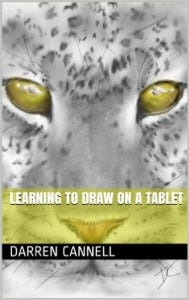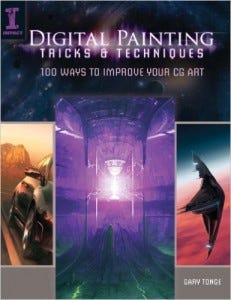Review: Art Books, Part I
I have a lot of books on art. Not as many as I used to, sadly, but still, more than I probably need. Books! must have books.
Ok, so I hoard books like some kind of dragon librarian. And the art books are meant to learn from, which means that sitting on the shelf they do me no good at all. I'm planning to change that, though, with a series of reviews. I'm not coming at this as a highly-trained artist, because I became a professional artist by falling through the looking-glass and now I'm trying to take that experience a few steps further and refine the images in my mind into something resembling a form others can recognize. So my perception of the art books is likely to be a bit odd. Also, the form of art I'm trying to learn right now is digital painting, so while the books I have on the shelf will help with the foundational skills, I'm also seeking books that will help me learn the computer skills as well.
And that's where I'm starting. With a trio of ebooks I recently picked up through Kindle Unlimited and read through. Um - did I also mention that art books tend to be expensive? Very expensive? They are usually specialty items, with very short print-runs so finding used books isn't practical. Add to that, the digital art books become outdated very quickly. So I am hunting through KU for cheap reads, and will be seeking trustworthy reviews before I invest in others.

Learning to Draw on a Tablet by Darren Cannell is more a collection of links to youtube videos. It's poorly formatted and although its got some useful tips for making Sketchbook Pro work for you, it's a bit of a one-trick pony. There are a lot of drawing apps for your tablet, whether Android or iPad, and although I agree with him that Sketchbook is likely the best, I would have liked to see more substance in the book rather than constant badly formatted links to external content.

The other two books are by the same author, Gary Tonge, and they are much more substantive. Geared toward teaching art in general, he touches on elements such as color, composition, and using photos as references. Digital Painting, 26 Beginner Tricks and Techniques is very basic, but I would recommend that you instead look at his more comprehensive book that includes his beginner, intermediate, and advanced techniques. Digital Painting Tricks & Techniques: 100 Ways to Improve Your CG Art has everything the first book has, so if you buy both you will be disappointed. I found it interesting, but was slightly disappointed that the instructions were rather vague. I'm really glad I didn't pay a lot for it, because there are no step-by-steps, it's just a few steps and then voila, it's finished... but he doesn't tell you how to get there from there. However, if you have KU I'd say go ahead and pick it up, the art he included is beautifully done, and I did pick up some hints that were helpful, even if I was left wanting more.
I painted the Three Towers using some of the ideas from the book, but where his speed painting has a lot of polish on it by the end he neglects to tell the reader just how we are supposed to do that too. Ah, well, perhaps a book this coming week will yield some secret knowledge that will be a tool to help me polish art better.



